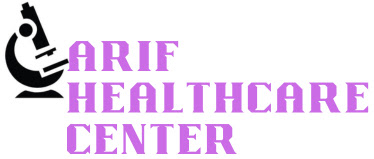1. Assessment of the mother:
After giving birth, the healthcare team assesses the
mother's condition to ensure she is stable and recovering well. This assessment
includes:
- Checking vital signs such as blood pressure, pulse, and
temperature.
- Monitoring for any signs of excessive bleeding or other
complications.
- Providing pain relief as needed, especially if the mother
has undergone a vaginal delivery or cesarean section.
2. immediate Skin-to-Skin Contact:
One of the first things to do after birth is to encourage
immediate skin-to-skin contact between the mother and the newborn. This contact
offers numerous benefits, including:
- Regulating the baby's body temperature.
- Stimulating the baby's breathing and heartbeat.
- Promoting bonding between the mother and the newborn.
- Initiating breastfeeding by allowing the baby to root and
latch onto the breast.
3. Assessment of the Newborn:
Simultaneously, the healthcare team assesses the newborn's
condition to ensure they are healthy and adapting well to life outside the
womb. This assessment includes:
- Checking the baby's vital signs, including heart rate,
breathing rate, and temperature.
- Performing a physical examination to look for any signs of
distress or abnormalities.
- Administering any necessary medical interventions, such as
suctioning the baby's airways or providing oxygen.
4. Breastfeeding Support:
Immediately after birth, the healthcare team provides
support and guidance for breastfeeding. This includes:
- Assisting the mother with positioning and latching the
baby onto the breast.
- Educating the mother about the importance of breastfeeding
and its benefits for both her and the baby.
- Monitoring the baby's feeding behavior to ensure they are
breastfeeding effectively.
5. Umbilical Cord Clamping and Cutting:
Once the baby is born, the healthcare provider clamps and
cuts the umbilical cord. This is done using sterile equipment to prevent
infection. The timing of cord clamping can have significant implications for
the newborn's health, including:
- Allowing delayed cord clamping, which has been shown to
improve iron levels in newborns and reduce the risk of anemia.
- Administering any necessary medications or treatments,
such as vitamin K or erythromycin eye ointment.
6. Postpartum Care
for the Mother:
After giving birth, the mother requires ongoing care and
support to ensure her recovery goes smoothly. This includes:
- Monitoring for any signs of postpartum complications, such
as excessive bleeding, infection, or blood clots.
- Providing pain relief as needed, including medications and
non-pharmacological interventions such as ice packs or warm compresses.
- Offering emotional support and counseling for any feelings
of anxiety, sadness, or overwhelm the mother may experience.
7. Newborn Care:
In addition to assessing the baby's condition, the
healthcare team provides essential care for the newborn, including:
- Performing a thorough physical examination to check for
any signs of congenital abnormalities or medical issues.
- Administering any necessary vaccinations or prophylactic
treatments, such as vitamin K or hepatitis B vaccine.
- Educating the parents about newborn care, including
feeding, diapering, bathing, and safe sleep practices.
8. Bonding and Family Support:
After giving birth, it's essential to support bonding
between the mother, baby, and other family members. This includes:
- Allowing time for the family to bond with the newborn
through cuddling, holding, and talking to the baby.
- Providing emotional support and reassurance to the parents
as they adjust to their new roles.
- Encouraging family members to participate in the baby's
care and bonding process.
9. Documentation and
Record-Keeping:
Following the birth, the healthcare team completes all
necessary documentation and record-keeping tasks. This includes:
- Recording vital signs, medications, and interventions
provided to both the mother and the baby.
- Documenting the baby's weight, length, and head
circumference.
- Completing birth certificate paperwork and other legal
documents as required.
10. Follow-Up Care
and Discharge Planning:
Before leaving the hospital or birthing center, the mother
and baby receive instructions for follow-up care and discharge planning. This
includes:
- Scheduling follow-up appointments for both the mother and
the baby with their healthcare providers.
- Providing information about postpartum recovery, including
signs of complications and when to seek medical attention.
- Arranging for any necessary support services, such as
lactation consultation or postpartum doula care.
Conclusion:
In the immediate moments following childbirth, there are
numerous essential tasks to complete to ensure the health and well-being of
both the mother and the newborn. By providing prompt and comprehensive care,
healthcare providers can help facilitate a smooth transition to parenthood and
promote the best possible outcomes for mother and baby alike.

.jpg)


.jpg)



0 Comments